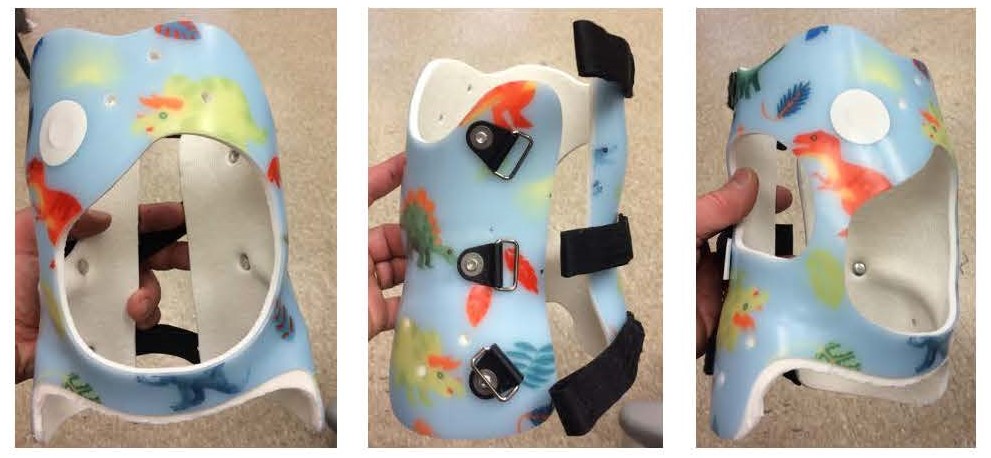Boston Brace Baby
The Boston Brace Baby is the next innovation in the non-operative treatment of infantile idiopathic scoliosis. The Boston Brace Baby orthosis is specifically designed to utilize many of the Mehta and Boston Brace 3D concepts for infantile idiopathic scoliosis treatment . Our clinical experts have combined knowledge of the three-dimensional scoliosis curvature with the latest in shape capture and CAD/CAM technologies. This enhanced brace design comes from the unique and selective shift/push/relief combination of corrective forces that are fabricated into each brace.
How the Boston Brace Baby Works
Infantile idiopathic scoliosis is a three-dimensional abnormality, and the Boston Brace Baby orthosis works to correct the spine in all three planes—coronal, sagittal and transverse. The custom-fabricated Boston Brace Baby features an improved brace design with a unique shift/push combination of forces that move the spine into a corrected position. Additional space is provided for rotational correction and breathing mechanics.

Custom Fabricated Using CAD/CAM Technology
To ensure maximal curve correction, the Boston Brace Baby is custom fabricated and designed for each individual patient. Shape capturing technology (scans) and precise measurements of the patient are obtained to create a three-dimensional CAD/CAM model. Systematic analysis of the X-ray is performed to optimize the corrective forces (push/shift) creating an asymmetrical shape, while optimizing sagittal plane balance. The corrective forces are created in conjunction with open/void areas that allow for easier breathing mechanics.
Casting vs. Bracing for Infantile Scoliosis Treatment
Mehta casting has proven to be effective in correcting the curve for those patients meeting the rib vertebral angle difference (Mehta angle) criteria. The concern with this method is the repeated exposure to anesthesia (FDA issued a warning). Bracing has been used for some time in between cast changes and during the summer months to provide a break for the patients. Some facilities are now applying casts without the use of anesthesia. With the advances in both scanning and brace design, we are seeing positive results with the use of bracing only. Read Kelsey's story on bracing vs casting.
Infantile Bracing Goals
- Improve the curve as effectively as the Mehta casting
- Eliminate the need for anesthesia
- Maintain wear compliance to an "acceptable" level
- Improve family satisfaction
The results we have seen to date show that bracing has comparable results to Mehta casting. Both options have proven successful but we believe in a brace vs a body cast for a number of reasons including the child's comfort, bathing, and the fact that the patient can avoid having to go under anesthesia altogether.

